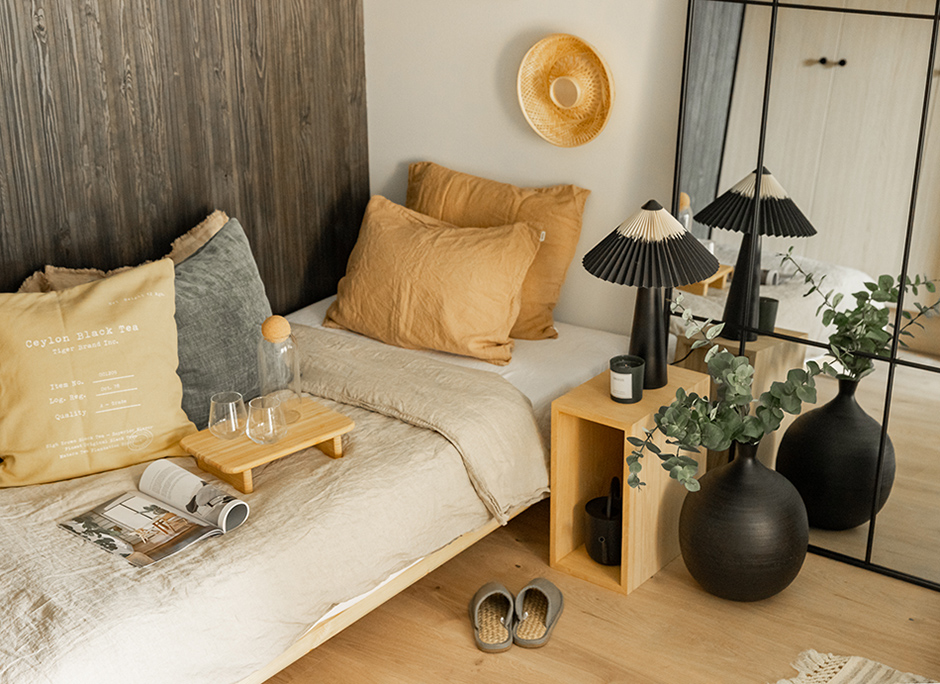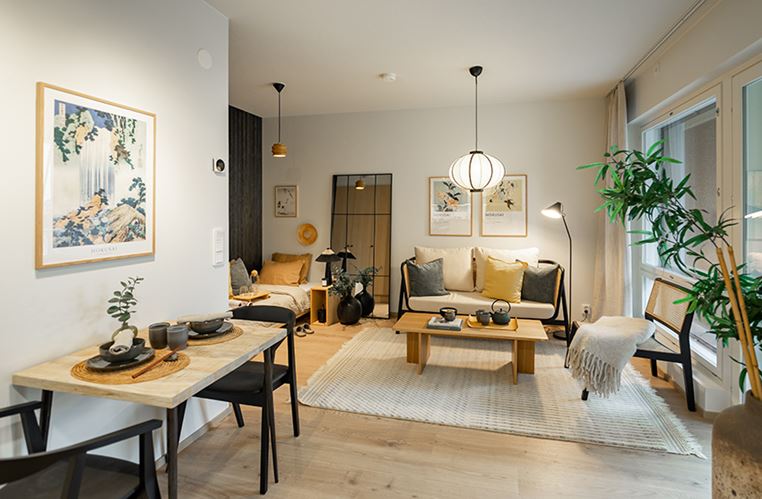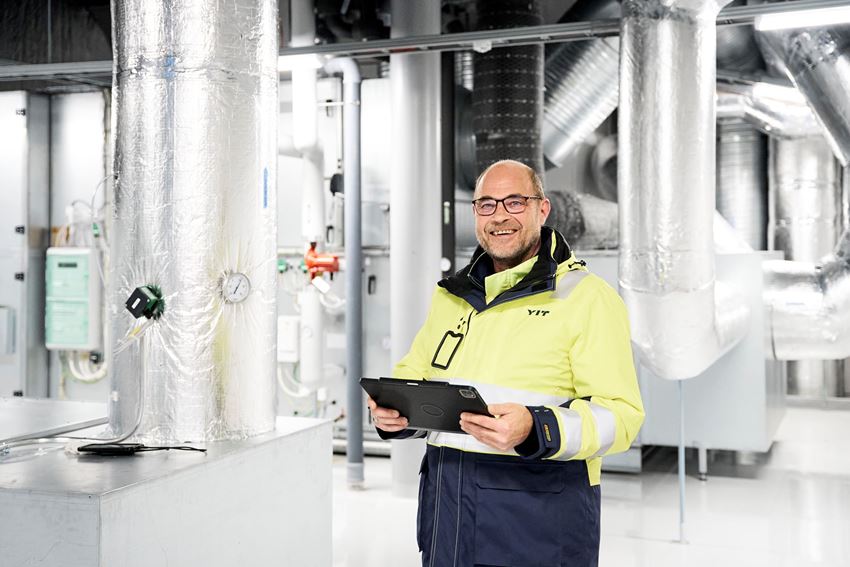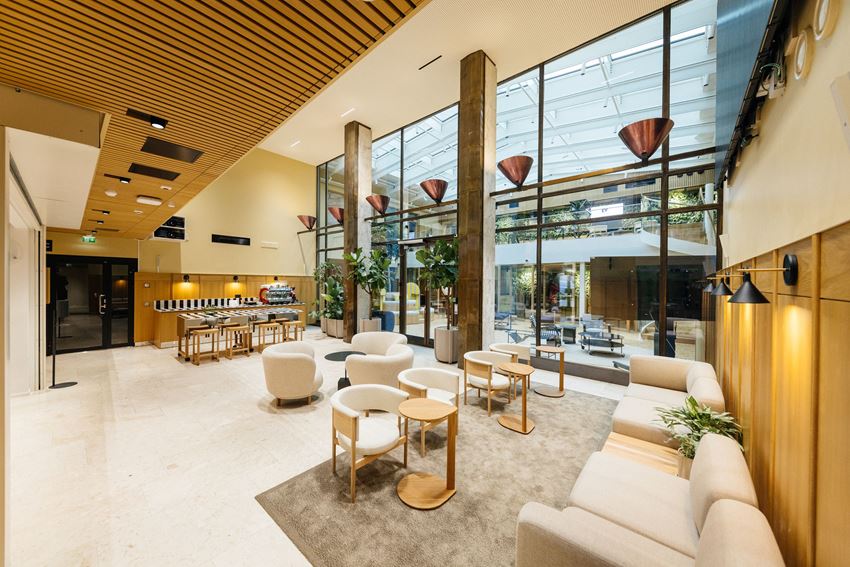YIT builds with taxonomy compliance: Case Aleksanterinkatu 13
- Home
- Buying a home
- Sustainability
- 1/17/2024
Everyday life in a new home with respect for the environment
A new energy-efficient home reduces the carbon footprint of living and promotes an ecologically conscious lifestyle in many ways. You can also choose more environmentally friendly interior decor materials for your new home.
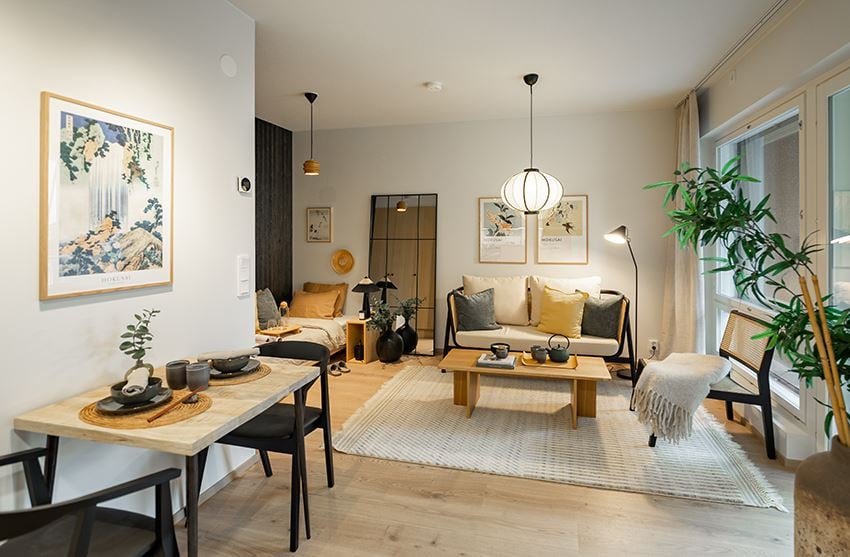
People today want to be able to personalise the home they buy. After all, a house only becomes a home when it really feels like home – and that’s where it helps to have a say in interior design, from floor to ceiling. But how much are buyers’ choices driven by sustainability and ecological values?
A grand 14-storey tower block called Kanavansilta will be completed in Tampere by May 2024. The site is sustainable, using only renewable electricity and sorting at least 75 per cent of its waste for recycling.
Waste management in the new housing company will be taken care of using a pipe system that will take rubbish through a suction pipe for recycling, eliminating the rush of waste collection lorries altogether. Each parking space will have an electric car charging point. But what kind of responsible solutions are in store for the homes themselves?
According to YIT’s alteration work specialist Päivi Mäkinen, three of the 81 apartments in the building are model apartments, and in one of them, the interior decor materials have been chosen with environmental friendliness foremost in mind. Water-saving fittings are used in the kitchen, bathroom and toilet. The Damixa taps in the model home are all nature-saving, energy-saving or water-saving.
“This is probably the easiest box to tick, because everyone wants to save water and money at the same time,” says Mäkinen.
And you can buy the beautiful apartment in the picture here –>
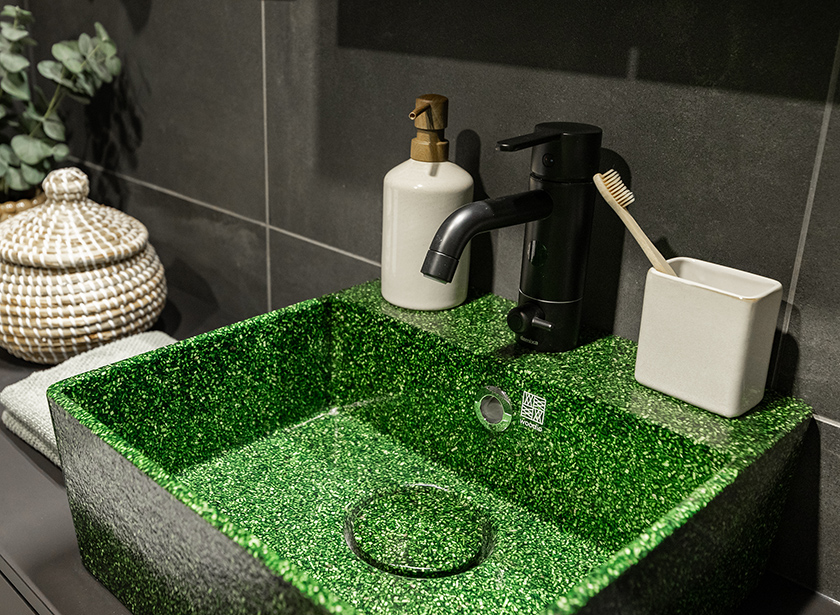
Naturally sustainable
The flooring in the environmentally friendly studio apartment is Kährs Aware, which is bio-based and organic design flooring. Eco-friendly flooring made from natural materials is very durable and is therefore the perfect choice for your home.
Woodio, a Finnish design brand that is synonymous with biomaterials, plays a prominent role in the apartment. The bathroom sink, towel hooks and kitchen partition are all made from the company’s products. Woodio uses a fully water-resistant wood composite in all its products, developed as an ecological alternative to ceramics and stone materials.
“My personal favourite in the apartment is probably Woodio’s green sink,” says Mäkinen.
Woodio products have a low carbon footprint, and no water is used in their production. Another example of the same school of thought is the LPC Rev bathroom tiles, which are manufactured in a carbon-neutral way.
“In addition, the apartment has an effect wall with Cent Dyyni panels made of Finnish pine.”
Eco-friendly choices increasingly popular
A home decked out with the most ecological interior materials possible offers a glimpse of a future where considerations of sustainability will guide consumption decisions even more than they do today.
“Sustainability-related considerations will loom larger, but so far these issues have not yet mobilised large numbers of people,” Mäkinen says.
Pioneers of sustainability – often young, educated city dwellers – are already keenly seeking eco-friendlier alternatives.
“The importance placed on sustainability will really increase at some point,” Mäkinen says.
An individualist’s wonderland
Another emerging trend in housing is, of course, customisation of all kinds. When Mäkinen started working in renovation in 2005, customisation was still small-scale: for instance, people wanted different-coloured tiles for the bathroom than what was set out in the plan.
“Nowadays, people want their entire home to reflect their own tastes, and they are prepared to invest heavily in this,” she says.
This also means that home modifications during the construction phase allow home buyers to choose their own and more environmentally friendly interior materials, making their home not only personal but also as sustainable as possible.
“We have wanted to offer sustainable housing options for a long time now, and we will do this even more in the years to come.”
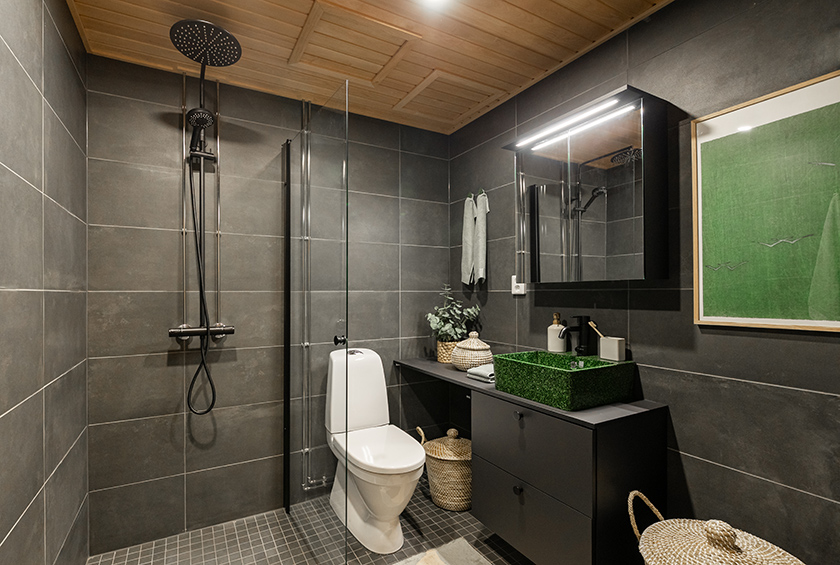
Sustainable construction, more responsible housing
- YIT’s target for 2030 is for its own operations to be carbon neutral, and for emission reductions in construction to be reduced by more than 30 per cent from the 2019 level.
- For example, the Kanavasilta bridge in Tampere makes use of a carbon footprint calculation, which amongst other things provides guidance in the choice of materials with a lower environmental impact.
- All residential buildings designed after January 2023 will be in energy class A.
- Nearly 90 per cent of the emissions during the life cycle of a residential building are caused by energy consumption during occupancy and the production of building materials. This is why YIT favours carbon-neutral heating of residential buildings (e.g. geothermal heating) and the increasing use of more environmentally friendly building materials such as low-carbon cavity slabs.
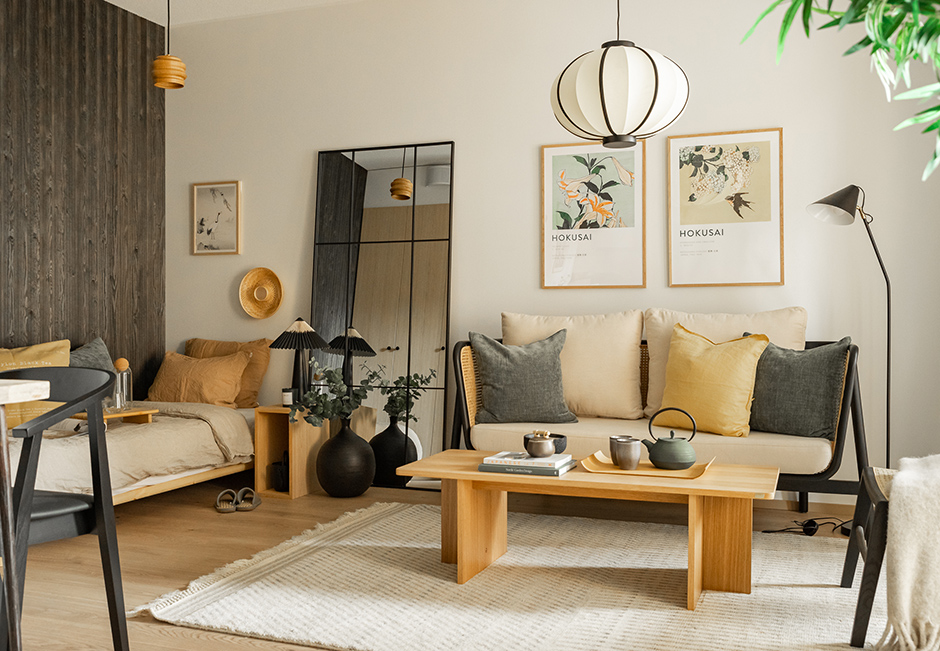
Finnish consumers are led by common sense – in housing too
Sustainability is definitely also a driving force behind consumer choices in housing, says consumer researcher Terhi-Anna Wilska from the University of Jyväskylä.
“If you look at the materials used in homes, for example, sustainability is certainly a factor in the decision-making process.”
Wilska says that consumers in Finland prefer sensible housing solutions that often combine durability with longevity, practicality and value for money.
This is why people are buying water-saving, environmentally friendly taps for their homes, for example, or choosing Finnish certified wood with a low carbon footprint for their floors.
“Energy efficiency is a strong selling point nowadays.”
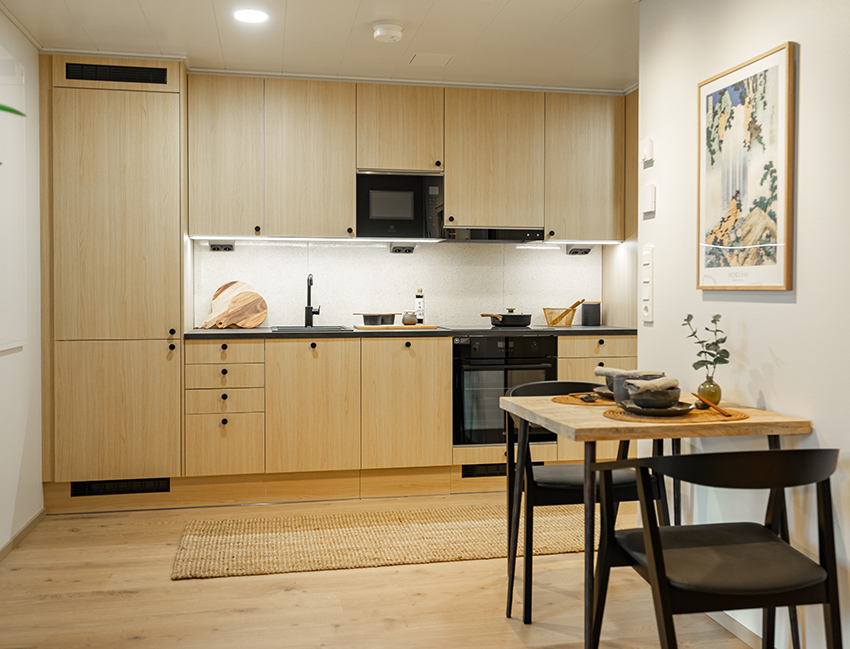
When it comes to the sustainability of construction and housing, attention has often been focused on whether there are solar panels on the roof or a well drilled for geothermal heating on the plot. Gradually, however, other levels of discussion have also emerged, such as whether the dwellings are sized sustainably.
“During the coronavirus pandemic, people started dreaming of bigger homes, and it’s true that homes in Finland are quite small by European standards,” Wilska says.
“Remote working seems to be here to stay, so more space – or at least more rooms – is definitely needed.”
So who make up the vanguard of sustainable housing? Wilska says it is well-off, “premium” consumers who prefer sustainable solutions, including in their housing.
“Premium consumers are typically younger, middle-aged,
better-off urban dwellers, and quite often women.”
According to Wilska, the correlation between environmentally conscious ideas and eco-friendly consumption is quite strong, but it is not a passing eco-hippy fad.
“For example, many big international brands are investing in sustainability, and it shows in the quality of their products.”
